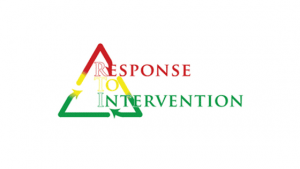K 12 is a system of education in Europe, Asia, South America, and some parts of Africa where students are subjected to the first year in Kindergarten school and 12 years of primary and high school. This model of education has had its own share of advantages and disadvantages. We take a look at some of the pros and cons of this model.
Pros:
1. Preparedness for tertiary learning: k12 education system is extensive with different grades that are designed to prepare learners for tertiary education through stage-by-stage learning and preparation.
2. Readiness to join the workforce: k12 is important because each stage is divided into various units that are designed to offer the student enough preparatory materials for the workplace. The content given is designed to ready the student for various scenarios in the workplace.
3. It builds capacity in children: k12 is designed in such a way that each stage has enough content to equip the child with information and allow them to make independent decisions that affect their lives.
4. It creates stages in education: The 12 years in primary school and high school breaks down an otherwise compact education system that would have been overburdening if it were not broken down into manageable components.
5. It promotes easy understanding: By breaking the system down into various stages of learning, children are able to easily understand what is taught as they mature gradually at each stage of education.
6. It creates a conducive learning environment: The k12 system of education is broken down into various stages that accommodate like-minded children thus creating a conducive learning environment for all students.
7. It encourages respect in schools: The k12 education system bolsters respect among the students owing to the fact that each student belongs to a particular grade that identifies seniors and juniors within the school.
8. It builds skills for the global economy: k12, like all other education systems, is designed to build skills for the betterment of the global economy. The skills learned at this level can be employed in various places of work for productivity.
9. It promotes development: k12 education system promotes development both within the school and outside the school because it equips students with the necessary skills needed for development.
10. It creates order in schools: k12 system creates order in schools by defining each and every student based on the grade in which he/she belongs.
Cons:
1. It creates factions: By segregating the students in such a manner, it is easy to create factions that would lead to divisions in the school.
2. It is lengthy: k12 education model requires that students stay in school for thirteen years before they can join tertiary education. This is long and tiresome especially for children who are growing up.
3. It encourages repetition: k12 grading is such that each of the students will be measured by how good they are in each class. Those who fail to pass qualifying exams are forced to repeat the grade.
4. It is tiresome: Children going through this mode of education are required to stay in class for up to 8 hours each day for 13 years. This is not only lengthy but it is also tiresome.
5. It diminishes students’ interest to study: Like any other long process, children are most likely to lose interest in studying by the time they hit the halfway mark in this type of education.
6. It is costly for parents: The k12 system of education is costly especially due to the fact that it is lengthy and requires students to stay in school for several years.
7. Schools lack enough facilities:
Some schools with this system of education lack enough facilities owing to the high demand that the system puts on the already limited resources.
8. Only beneficial to private schools: The system is only beneficial to private schools that are out to make a profit but are costly for government schools.
9. Needs a lot of money from the government: The government-funded schools require a lot of money to manage the system. The money could have been channeled to other uses.
10. It increases the teacher’s time in class: Teachers are required to stay in class for very long periods of time and this robs them of personal time.




I REALLY appreciated this article! Thank you so much for putting this out there! Though it is something not commonly read, it is very true! My husband was a public and charter school teacher for a number of years and said many of the same things you’ve published here. My question would be, what would you recommend for schooling children at home? What/Which curriculum(s)? How would you do it with multiple children? Etc. We want to give them a solid, meaty education, without taking away from life; wasting time, money or resources. Thank you so much!
It’s nice that you pointed out how the K12 educational program is designed to build skills for the betterment of the global economy. Our son is about to start attending school so we’re thinking of enrolling him to a place that uses the K12 program. We missed the enrollment period this year so we’ll probably enroll him next time.